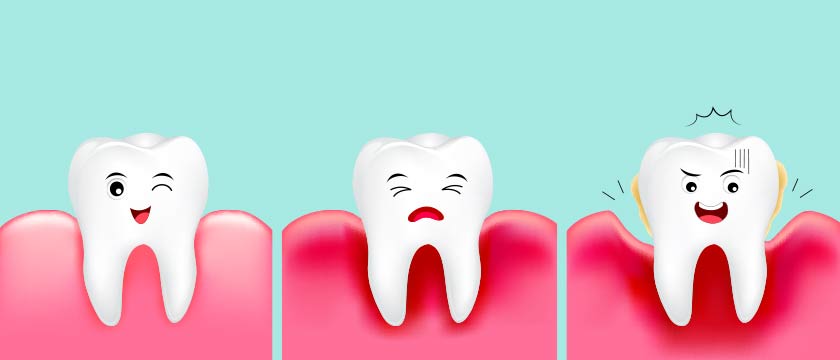
Introduction of Gum Disease
Gum disease, also known as periodontal disease, is a common oral health condition that affects the gums and surrounding tissues. It is a significant public health concern, as it can lead to severe consequences if left untreated. In this article, we will delve into an understanding gum disease, the causes, symptoms, and treatment options for gum disease, emphasizing the importance of preventive measures to maintain excellent oral hygiene and overall well-being.
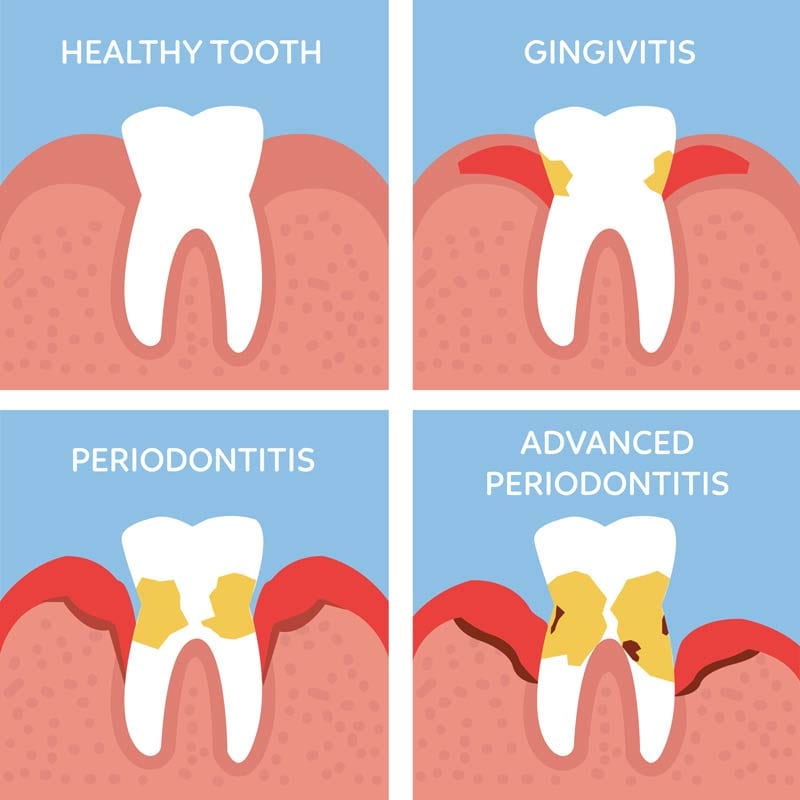
1. The Causes of Gum Disease
Gum disease primarily occurs due to the accumulation of plaque and bacteria around the teeth and gums. Plaque is a sticky film made up of bacteria, food particles, and saliva that forms on teeth regularly. If not effectively removed through proper oral hygiene practices, plaque hardens into tartar, a calcified deposit that can only be removed by a dental professional. The presence of plaque and tartar irritates the gums, leading to inflammation and initiating the early stage of gum disease, known as gingivitis.
Several risk factors can contribute to the development of gum disease:
a) Poor Oral Hygiene: Inadequate brushing, flossing, and irregular dental check-ups can significantly increase the risk of gum disease.
b) Smoking and Tobacco Use: Tobacco products hinder the healing of gum tissue, making smokers more susceptible to gum disease.
c) Genetics: Some individuals may have a genetic predisposition to gum disease, making them more prone to developing the condition.
d) Hormonal Changes: Hormonal fluctuations during puberty, pregnancy, and menopause can make gums more sensitive and susceptible to gum disease.
e) Certain Medications: Some medications can reduce saliva flow, leading to dry mouth, which increases the risk of gum disease.
f) Chronic Conditions: Conditions like diabetes and autoimmune diseases can weaken the body’s immune system, making it harder to fight off infections, including gum disease.
2. Symptoms of Gum Disease
Gum disease often progresses slowly, and in its early stages, symptoms might be mild or unnoticed. However, as it advances, the following symptoms may become evident:
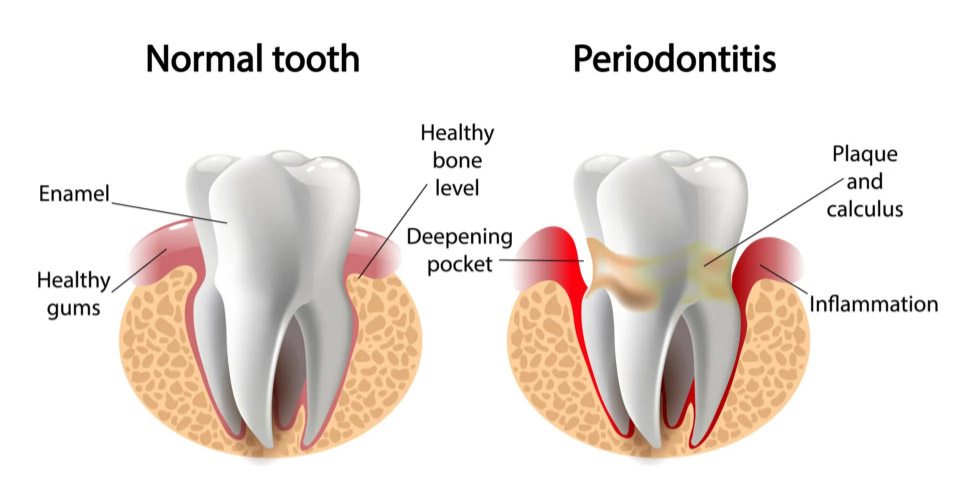
a) Red and Swollen Gums: Gingivitis causes the gums to become inflamed and tender.
b) Bleeding Gums: Gums that bleed during brushing, flossing, or eating are a common sign of gingivitis.
c) Persistent Bad Breath: Foul-smelling breath that doesn’t improve with oral hygiene might indicate gum disease.
d) Receding Gums: As gum disease worsens, the gum tissue may start to pull away from the teeth, leading to gum recession.
e) Loose or Shifting Teeth: Advanced gum disease can cause teeth to become loose or change their position.
f) Pus Formation: In some cases, there might be a formation of pus between the teeth and gums.
g) Changes in Bite: Gum disease can affect the way teeth fit together when biting or chewing.
3. Stages of Gum Disease
Gum disease progresses through various stages, each requiring different levels of intervention:
a) Gingivitis: The earliest stage, characterized by gum inflammation but no irreversible damage to the supporting structures.
b) Mild Periodontitis: Progression of gingivitis to mild periodontitis involves the loss of bone and fibers supporting the teeth.
c) Moderate Periodontitis: Continued bone and fiber loss, causing deeper pockets to form around the teeth.
d) Advanced Periodontitis: The final stage where significant bone and fiber loss lead to tooth mobility and potential tooth loss.
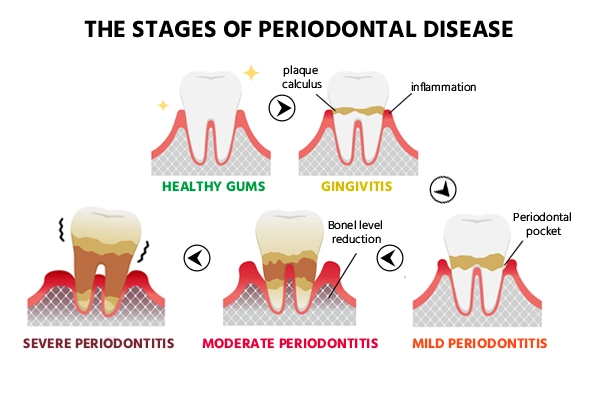
4. Treatment of Gum Disease
Timely detection and appropriate treatment are vital in managing gum disease effectively. The treatment approach will depend on the severity of the condition:
Timely detection and appropriate treatment are vital in managing gum disease effectively. The treatment approach will depend on the severity of the condition:
a) Professional Dental Cleaning: Scaling and root planing, performed by a dental hygienist, effectively remove plaque and tartar from above and below the gum line.
Gum toothbrush, electric flosser, electric toothbrush for braces, water flosser, oral irrigator from OralGos are highly recommended for use.
b) Medications: Antibiotics, antimicrobial mouth rinses, or enzyme suppressants can aid in controlling bacterial growth and promoting gum healing.
c) Surgery: In advanced cases, surgical procedures such as flap surgery, bone grafts, tissue grafts, or guided tissue regeneration may be necessary to repair damaged tissues and restore oral health.
d) Ongoing Maintenance: Regular dental check-ups, cleanings, and improved oral hygiene habits at home are essential to prevent the recurrence of gum disease.
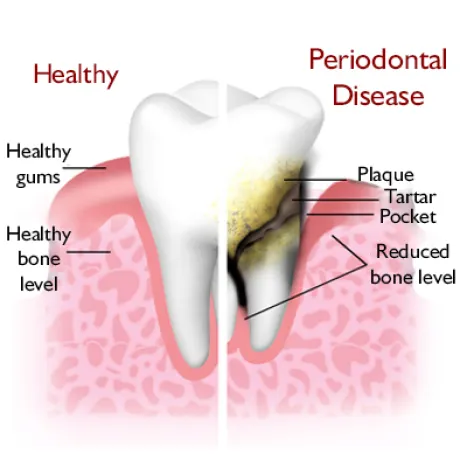
5. Preventive Measures
Preventing gum disease starts with establishing a robust oral care routine:
a) Brushing: Brush your teeth at least twice a day with fluoride toothpaste, using a soft-bristled toothbrush.
b) Flossing: Floss daily to clean areas between teeth that brushing cannot reach, using a portable water flosser.
c) Regular Dental Visits: Schedule regular dental check-ups and cleanings every six months or as recommended by your dentist.
d) Balanced Diet: Consume a balanced diet rich in fruits, vegetables, and whole grains while limiting sugary snacks and beverages.
e) Avoid Tobacco: Refrain from smoking or using any tobacco products.
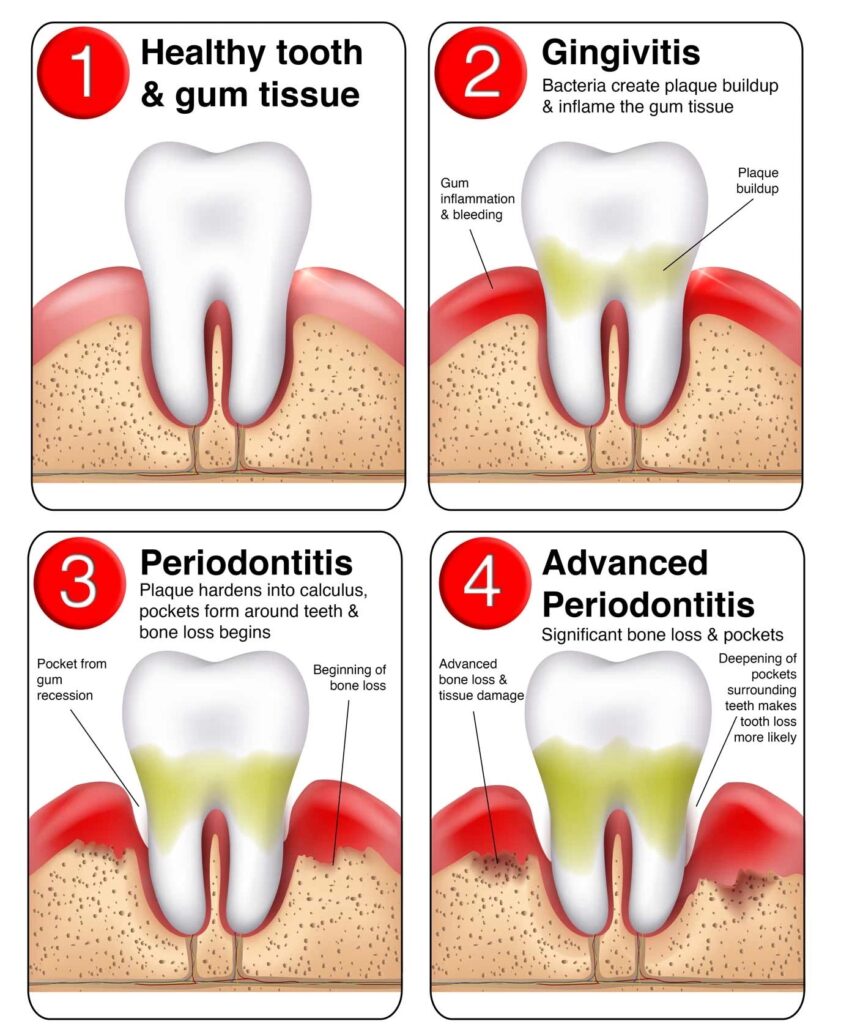
Summary from OralGos
Understanding Gum Disease: Gum disease is a common yet preventable oral health issue that can lead to significant complications if not addressed promptly. Practicing good oral hygiene, seeking regular dental care, and understanding the signs of gum disease are crucial steps in maintaining healthy gums and a radiant smile. By taking proactive measures, individuals can preserve their oral health, leading to improved overall well-being. If you suspect gum disease or notice any of the mentioned symptoms, promptly consult a dental professional for appropriate evaluation and treatment.

